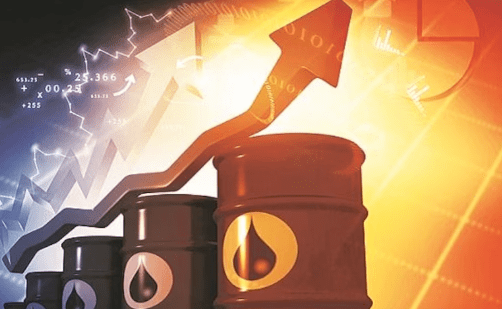Table of Contents
- Introduction
- Recent Price Movements
- Factors Influencing Oil Prices
- Geopolitical Tensions
- Economic Indicators
- Supply and Demand Dynamics
- Detailed Analysis of Current Market Conditions
- Brent Crude Futures
- U.S. West Texas Intermediate Crude
- Historical Context
- Technical Specifications and Market Data
- Applications of Crude Oil
- Energy Production
- Industrial Uses
- Benefits of Monitoring Oil Prices
- Challenges in the Oil Market
- Geopolitical Instability
- Economic Fluctuations
- Recent Innovations in the Oil Industry
- Future Prospects for Oil Prices
- Comparative Analysis with Other Commodities
- User Guide to Understanding Oil Market Data
- Safety and Environmental Concerns
- Case Studies of Market Influences
- The Ukrainian Conflict
- Middle Eastern Tensions
- Expert Insights on Oil Market Trends
- Preventive Measures Against Market Volatility
- Personal Stories of Market Impact
- Impact of Chinese Economic Data
- U.S. Energy Information Administration’s Role
- Summary and Conclusions
- FAQs
1. Introduction
Oil prices have recently surged to a seven-week high, driven by a combination of demand optimism and geopolitical concerns. This article explores the factors behind this price increase, the market dynamics, and future prospects for oil prices.

Future Prospects for Oil Prices
2. Recent Price Movements
On Wednesday, Brent crude futures for August delivery rose by 20 cents to $85.53 per barrel, while the more actively traded September contract saw an increase of 21 cents to $84.74. Similarly, U.S. West Texas Intermediate (WTI) crude edged up by 3 cents to $81.60 per barrel.
3. Factors Influencing Oil Prices
Geopolitical Tensions
Geopolitical conflicts, especially in key oil-producing regions, significantly influence oil prices. Recent tensions include:
- A Ukrainian drone strike causing a fire at an oil terminal in a major Russian port.
- Israeli Foreign Minister Israel Katz’s warning of a potential “all-out war” with Lebanon’s Hezbollah, despite U.S. efforts to prevent broader conflict.
Economic Indicators
Economic performance indicators, such as industrial output and retail sales, affect oil demand. Notably:
- China’s May industrial output fell short of expectations.
- U.S. crude oil stocks increased unexpectedly by 2.264 million barrels for the week ending June 14, 2024.
Supply and Demand Dynamics
Supply and demand are crucial in determining oil prices. Factors include:
- Summer demand optimism, reflecting higher consumption rates.
- Supply disruptions due to geopolitical instability.
4. Detailed Analysis of Current Market Conditions
Brent Crude Futures
Brent crude futures for August delivery, set to expire soon, have risen to $85.53 per barrel, reflecting market optimism.
U.S. West Texas Intermediate Crude
WTI crude’s slight increase to $81.60 per barrel aligns with overall positive market sentiments despite mixed inventory data.
5. Historical Context
Understanding historical price movements and past geopolitical events helps contextualize current trends and predict future developments.
6. Technical Specifications and Market Data
Detailed market data and technical specifications, including contract expiration dates and inventory levels, provide insights into trading strategies and market health.
7. Applications of Crude Oil
Energy Production
Crude oil is a primary source of energy, used extensively in power generation and transportation fuels.
Industrial Uses
It is also crucial in various industrial processes, including the production of plastics and chemicals.
8. Benefits of Monitoring Oil Prices
Regular monitoring of oil prices helps stakeholders make informed decisions, manage risks, and optimize investment strategies.
9. Challenges in the Oil Market
Geopolitical Instability
Ongoing conflicts in oil-producing regions pose significant risks to supply stability and price predictability.
Economic Fluctuations
Economic downturns or unexpected industrial performance can lead to demand fluctuations, impacting prices.
10. Recent Innovations in the Oil Industry
Innovations in extraction technologies and energy efficiency are reshaping the industry, influencing supply and production costs.
11. Future Prospects for Oil Prices
Analysts predict tightening global oil balances and continued geopolitical tensions will keep prices volatile but generally upward-trending.
12. Comparative Analysis with Other Commodities
Comparing oil with other commodities like natural gas and metals helps highlight unique market dynamics and investment opportunities.
13. User Guide to Understanding Oil Market Data
A comprehensive guide to interpreting market reports, inventory data, and price charts for informed trading and investment decisions.
14. Safety and Environmental Concerns
Addressing the environmental impact of oil extraction and consumption, including regulatory measures and industry practices to mitigate adverse effects.
15. Case Studies of Market Influences
The Ukrainian Conflict
Examining how the Ukrainian drone strike on a Russian oil terminal influenced market perceptions and prices.
Middle Eastern Tensions
Analyzing the impact of potential conflicts between Israel and Hezbollah on oil supply and market stability.
16. Expert Insights on Oil Market Trends
Quotes and advice from industry experts and analysts provide deeper understanding and predictions on market movements.
17. Preventive Measures Against Market Volatility
Strategies for investors and companies to hedge against price volatility and manage risks effectively.
18. Personal Stories of Market Impact
Real-life examples of how market changes affect individuals and businesses, illustrating the broader economic and social implications.
19. Impact of Chinese Economic Data
The significance of China’s economic performance on global oil demand and prices, given its status as a major consumer.
20. U.S. Energy Information Administration’s Role
The role of the U.S. EIA in providing reliable data and analysis, crucial for market transparency and decision-making.
21. Summary and Conclusions
Summarizing key points discussed and offering final thoughts on the future outlook for oil prices and market conditions.
22. FAQs
What caused the recent increase in oil prices?
The recent increase is due to demand optimism, geopolitical tensions, and supply concerns.
How do geopolitical events affect oil prices?
Geopolitical events, especially in key oil-producing regions, can disrupt supply chains, causing price fluctuations.
What are the main factors influencing oil prices?
Main factors include supply and demand dynamics, economic performance indicators, and geopolitical stability.
How can investors hedge against oil price volatility?
Investors can use futures contracts, options, and other financial instruments to hedge against price volatility.
Open Your Demat Account with Discount Brokers:
ZERODHA 1) : https://zerodha.com/open-account?c=EJ4366
Angelone 2) : https://tinyurl.com/2gloc3g6 or
Upstox3): https://link.upstox.com/9w4tNo1rK8au7VK47









you are in reality a good webmaster The website loading velocity is amazing It sort of feels that youre doing any distinctive trick Also The contents are masterwork you have done a fantastic job in this topic